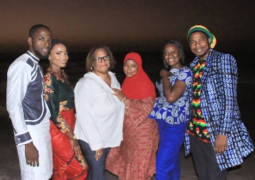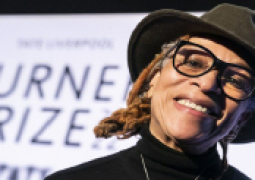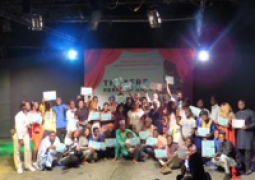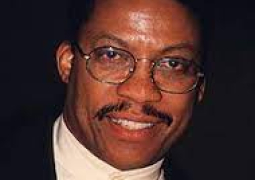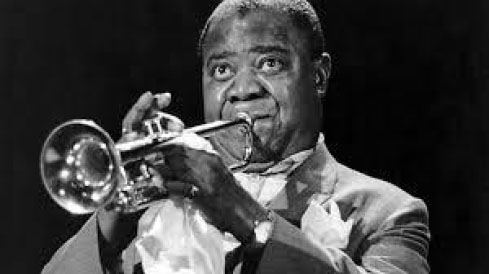
W
riting about Jazz can be tedious at times, just as writing about Democracy can also be an endless task, because these two concepts are ever evolving and have aroused interest throughout the world as societies try to understand the meaning of both words as they relate to the social being of man/woman in time, material and space. The history of Jazz and that of Democracy are intertwined and both movements have a direct relationship to the development and cultivation of the American experience.
We begin with a synopsis of the history of jazz in order to put it in proper perspective and to recognize the invaluable contribution of African Americans to the development of America’s most recognized cultural art form. Various scholars have traced the origins of jazz to the slave dances at Congo Square, now called Louis Armstrong Park in New Orleans.
In the Americas, the dance became known as the “Ring Shout” which describes the clusters of individuals moving in a circular pattern, chanting and wailing as they danced around. It has been observed that this tradition persisted well into the 20th century, and was still practiced in South Carolina as late as the 1950s. In fact, the Congo Square dances were hardly so long-lived, as there are indications that the practice continued, except for a brief interruption during the Civil War, until around 1885. Such chronology implies that their disappearance almost coincided with the emergence of the first jazz bands in New Orleans. It is important to note here that this transplanted African ritual lived on as part of the collective memory and oral history of the black community in New Orleans, which in turn, shaped the “self-image” of the early jazz performers as to what it meant to be an African-American musician.
Although there is an inclination to view the intersection of European-American and African currents in music as something theoretical or metaphysical, the storied accounts of the Congo Square dances provide us with a real time and place of an actual transfer of a complete African ritual to the native soil of the New World. Jazz musicians indeed played a key role as cultural ambassadors during the cold war and still continue to promote the values and virtues of the American experience.
It is said that the essence of jazz is the same as that of democracy, because it offers “the greatest amount of individual freedom consistent with a healthy community”. Jazz is democracy in sound through endless repetition, as each musician is allowed extraordinary liberty during solo, and is then expected to conscientiously back up the other musicians in turn. Ideally, this is what is envisioned in the democratic process from politicians and the citizenry alike.
Jazz has been described as democracy in sonic motion, for in it; one can see, hear and experience concepts that are fundamental to democracy. In fact, the study of jazz is now being used as a metaphor to teach the tenets of American democracy in elementary schools. This experiment started in California and is gaining ground in other states throughout America. Hence, the story of jazz is now not only historical and entertaining, it has also become pedagogical. Comparison of jazz to democracy is now a project in the U.S.A., and it is gaining momentum.
The development and evolution of jazz is an ongoing process moving from mainstream to bebop and then back to mainstream jazz with a lot of styles in between. It can also be very fascinating and revealing to explore the relationship between jazz and poetry, and how what became known as “jazz poetry”, has its roots firmly embedded in the oral tradition of African music. Jazz and poetry have long been associated together because of the amount of freedom embedded in their practice, but each art form (jazz/poetry) existed on its own, until the 1920’s when poets such as T. S. Elliot and E. E. Cummings began using the conventions of rhythm and style in their work. This development which was accompanied by the simultaneous evolution of jazz and poetry, led to the merging of the two art forms into one, namely –Jazz Poetry.
It was conceived by African Americans in the 20’s, maintained in the 50’s by counterculture (Beat) and adopted to modern times into rap and hip-hop. In the 50’s, it shifted focus from racial pride to spontaneity and freedom. Jazz poetry and music have always been seen as effective mediums to make powerful statements against the status quo at that time.
Jazz is always about listening and sharing. There are a thousand ways to say something, but the particular way one selects to express a thought, usually reflects the person’s mental state. In African societies, music is learned orally through the process of the master/student relationship. Master plays something and tells the student to “make it sound like this”. The direct experience of imitation (i.e. copying the master) introduces the student to the music without intellectual intervention. It goes directly to the sound of the music, as the intuition and the ears often know more than the intellect does. The oral tradition is the process used by the master to efficiently pass musical wisdom to succeeding generations of musicians. This wisdom is usually experiential and difficult to record in written form. Miles Davis once said that “you only copy from the best” and that “if it sounds good, you must have used the rules correctly”. If you copy good sounds, you are learning the rules of music by ear.
Jazz proverbs are ubiquitous throughout the history of jazz. They make sense to you at the time, but the information in them is usually hidden, and the other dimensions are illuminated only after one has enough experience and has acquired enough knowledge to relate to the proverb personally. Jazz proverbs are very powerful and in the 60’s, poet Leroy Jones (Amiri Baraka) revived the idea of jazz poetry as a source of black pride. Elements of jazz appear in his work such as syncopation and repetition of phrases. This technique was previously used by poet Langston Hughes and later by Gil Scott Heron.
The relationship between jazz and the blues is also always a subject of discussion among scholars of music, and the early accounts of slave music are strangely silent about the blues. Research has been done by some scholars to discover the surviving traces of the pre-slave origins of this music. The music called Blues is often associated with any sad or mournful song, but this is a misnomer as the term blues is a technical word which refers to a twelve-bar form that relies heavily on dominant tonic sounds and subdominant harmonies. This particular technique is known to have spread beyond the blues idiom into jazz and many other forms of popular music.
There have been attempts to trace the lineage of early blues singers as a continuation of the West African tradition of griot singing, but blues historian Samuel Charters summed it up in his findings as follows , “ Things in the blues had come from the tribal musicians of the old kingdoms, but as a style the blues represented something else. It was essentially a new kind of song that had begun with the new life in the American South.” As the blues progressed and started leaving its mark on this musical transition, so also was Ragtime developing with equal importance or more, as a predecessor to early jazz. With ragtime came the stride piano and indeed in the early days of New Orleans jazz, there was a thin line between ragtime and jazz performance and the two terms were used interchangeably.
After the advent of ragtime, the development and transition of jazz music took a different and progressive direction, encompassing all other forms and styles of music to make it universal and far-reaching. The story of this transition cannot be exhausted in this little piece but we hope you have enjoyed reading about jazz as we continue to share with you some valuable information about this beautiful music, its history and the people who helped shape it.


